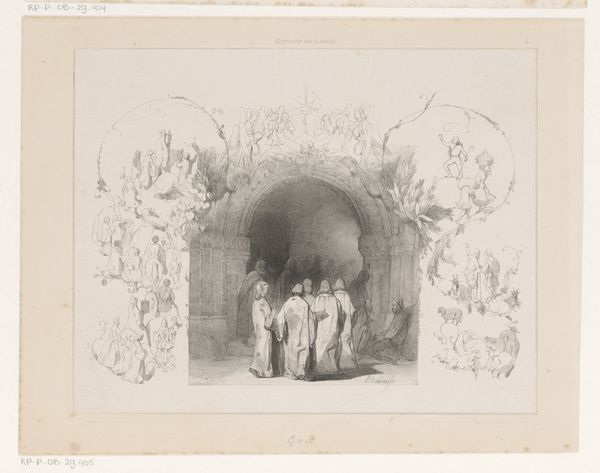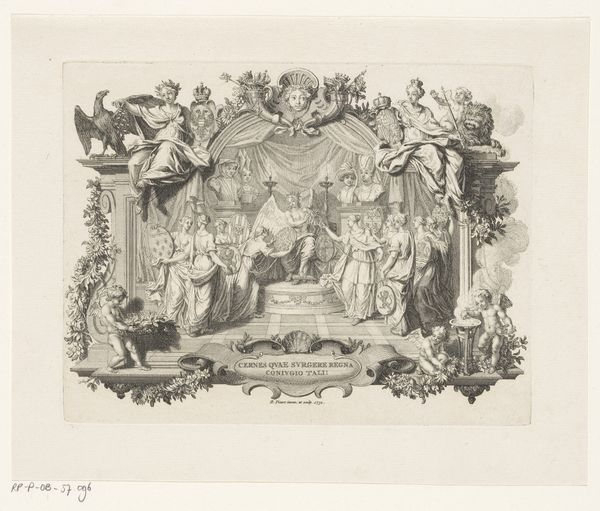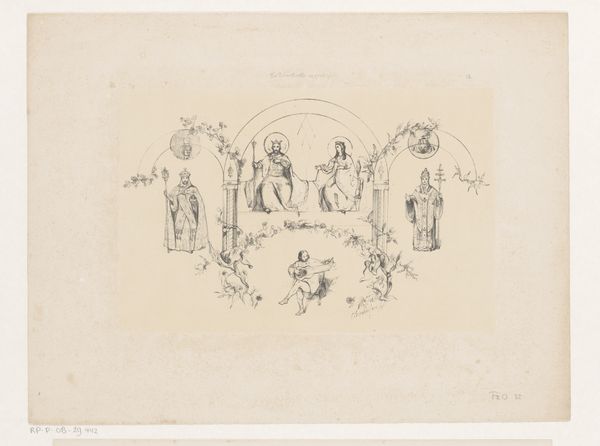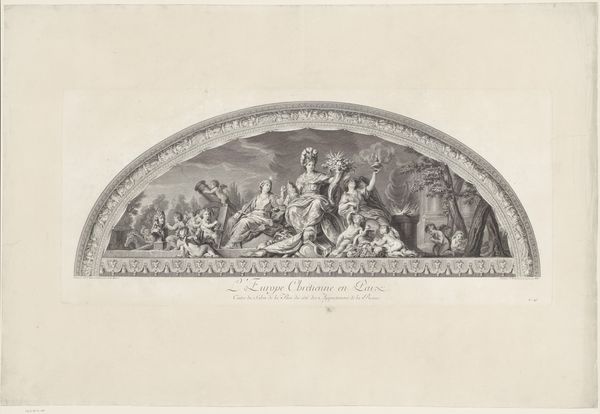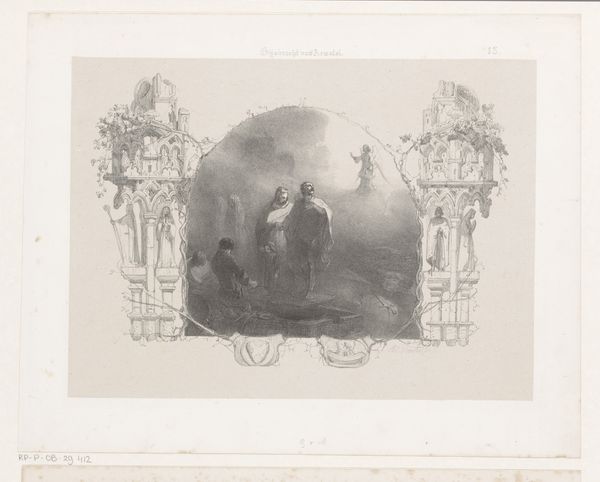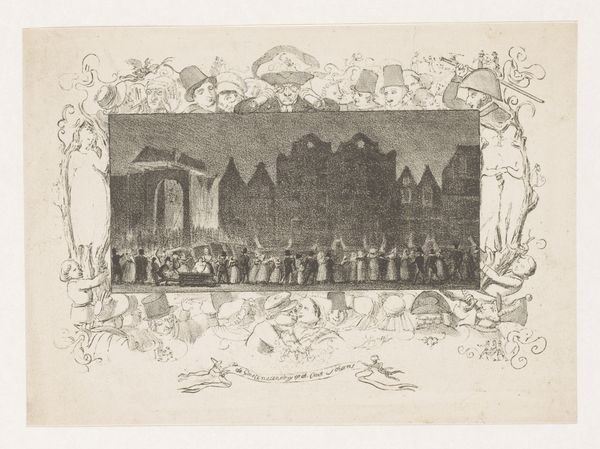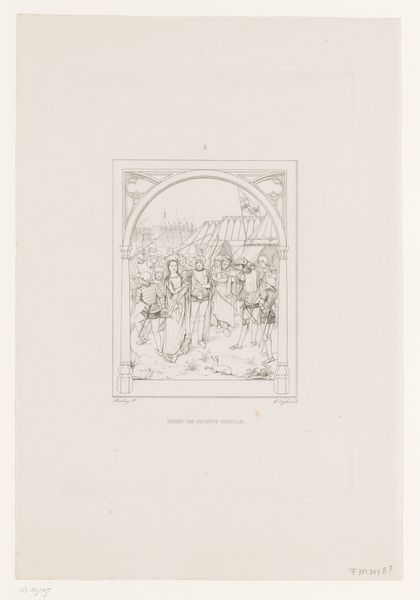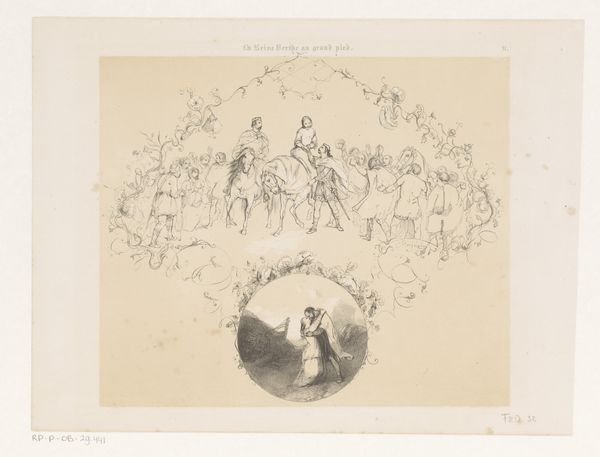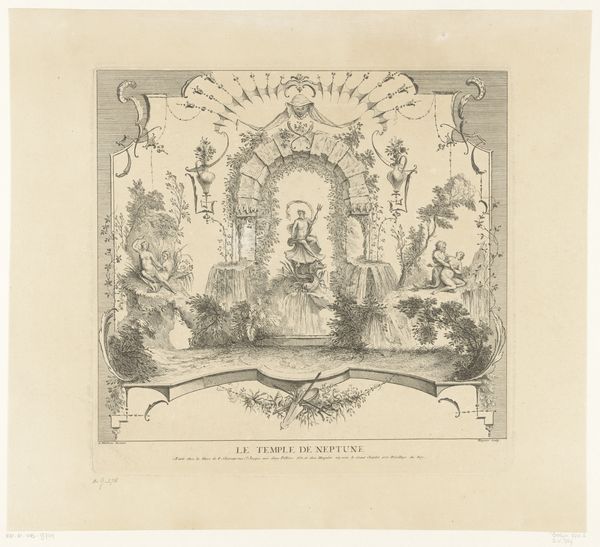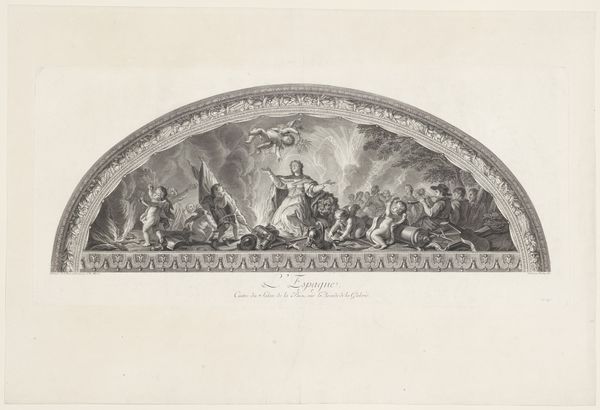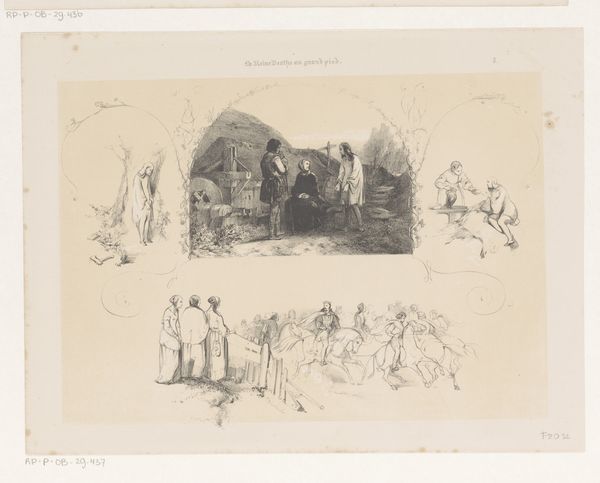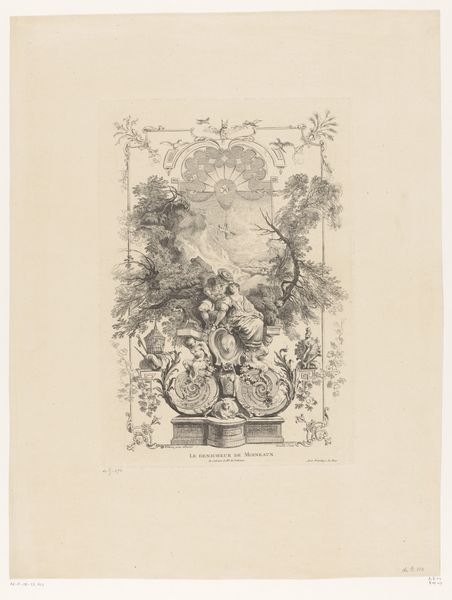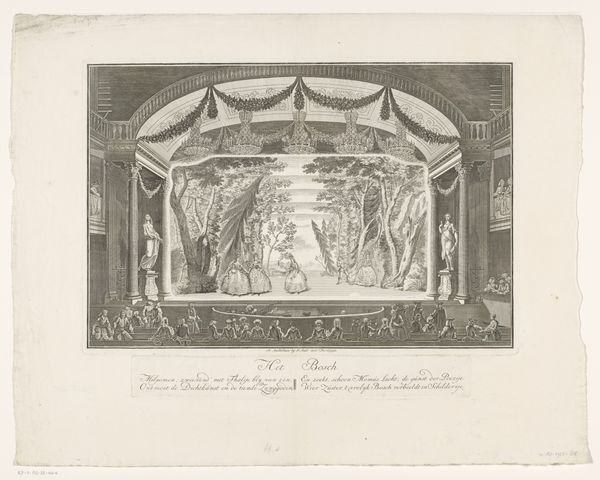
print, etching
#
narrative-art
# print
#
etching
#
etching
#
figuration
#
romanticism
#
history-painting
Dimensions: height 268 mm, width 345 mm
Copyright: Rijks Museum: Open Domain
Curator: What a fascinating find! This is an etching by Charles Rochussen, titled "Bishop and women before a group of knights." We believe it was completed before 1841. The Rijksmuseum holds this print in its collection. Editor: It's ethereal. Ghostly, almost. The lightness of the etching emphasizes a dreamlike quality, with wisps of clouds framing the scene. A cleric is clearly the focal point. Curator: Absolutely, the central grouping of figures dominates the composition. Considering it's narrative art from the Romantic era, the subject matter seems steeped in historical drama and religious authority, though perhaps more illustrative than didactic. Notice how the bishop's raised hand directs our attention? Editor: The etching technique, with its fine lines, amplifies the Romantic inclination towards emotional intensity. But also consider the placement of the feminine figures at the picture's border, which stand serene to the side as war looms on the front stage. Do you think they represent more virtuous ideals? Curator: I see the women on the margins more as witnesses, embodiments of purity contrasting with the stark realities of masculine power represented by the knights. The composition feels very staged, almost like a theatre production. And don't miss the imagery towards the foreground — the tomb and scattered bones! It hints towards consequences, perhaps the costs of the crusades. Editor: These symbols act like a visual shorthand for the grand narratives Romanticism favoured. Rochussen manages to convey an entire worldview—religion, military prowess, and delicate beauty—in a single scene. Curator: Etchings, often more accessible and reproducible, served a critical role in disseminating visual narratives to a wider audience. Pieces like these reflect how historical events were understood and idealized in the 19th century. They speak volumes about power, religion, and representation at the time. Editor: Looking closer, the delicacy of the execution and thematic weight tug in different directions. The ethereal quality I noted earlier speaks volumes about a collective romantic vision. It asks: how do we make sense of this vision today? Curator: That's the intriguing pull. We see this not as a literal portrayal but a romantic interpretation, one tinged with a kind of nostalgia for a constructed past. Editor: Thank you for walking us through such a delicate yet potent piece. Curator: My pleasure. I hope listeners find new meaning in it as well.
Comments
No comments
Be the first to comment and join the conversation on the ultimate creative platform.
